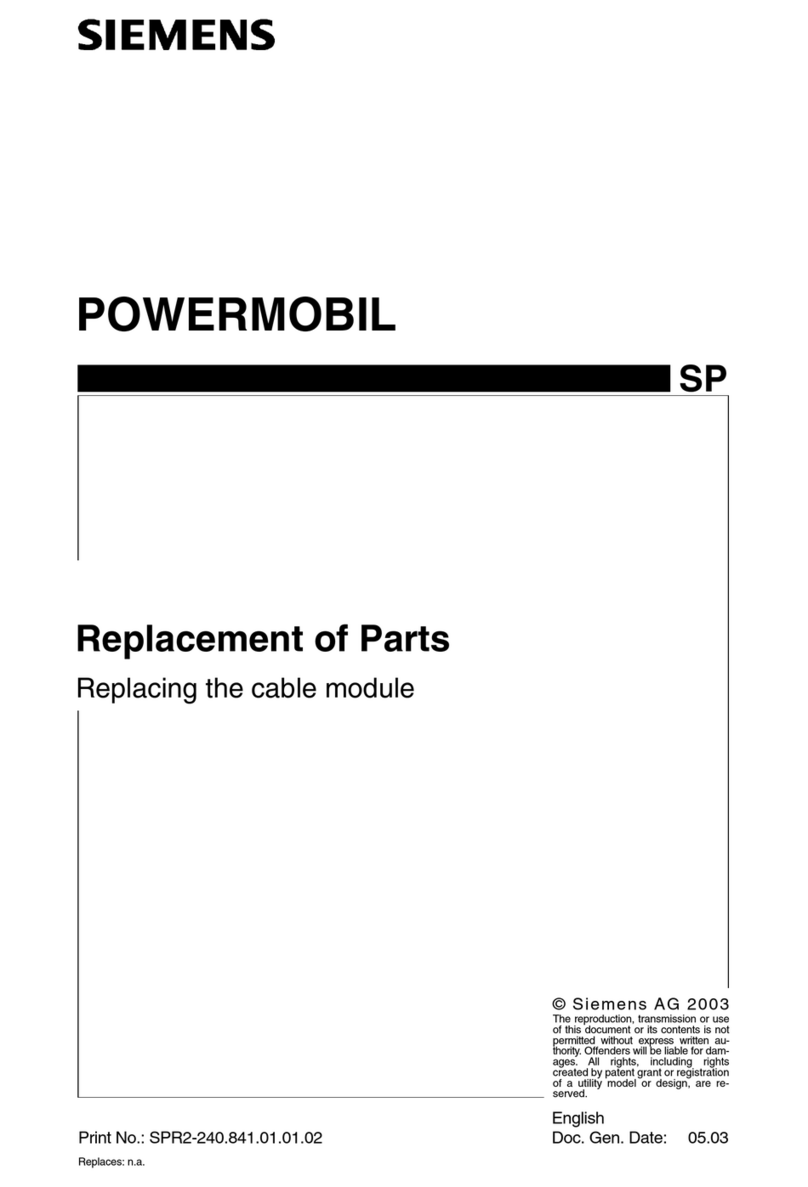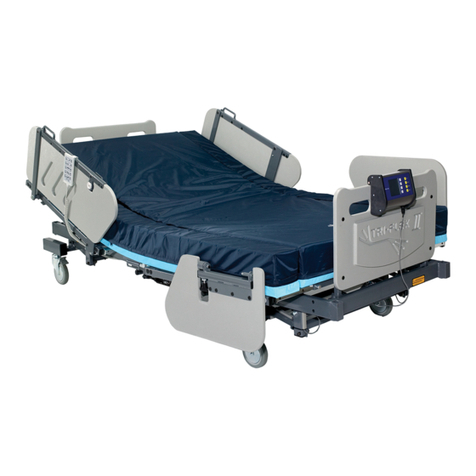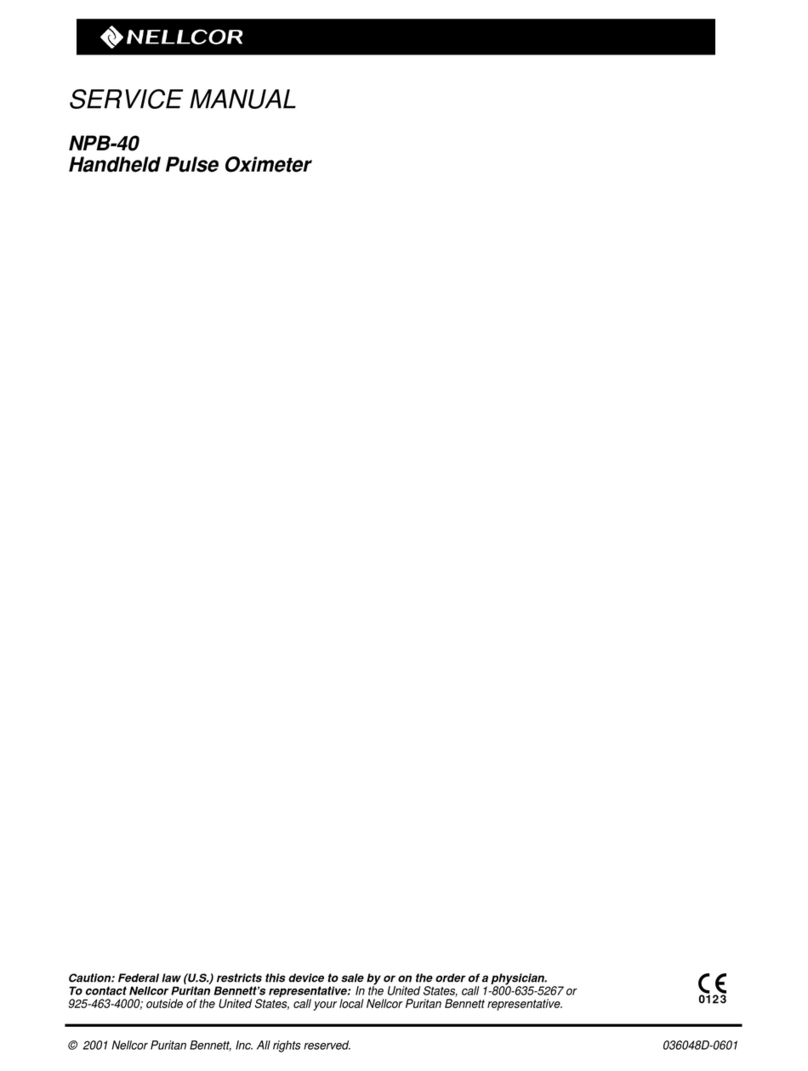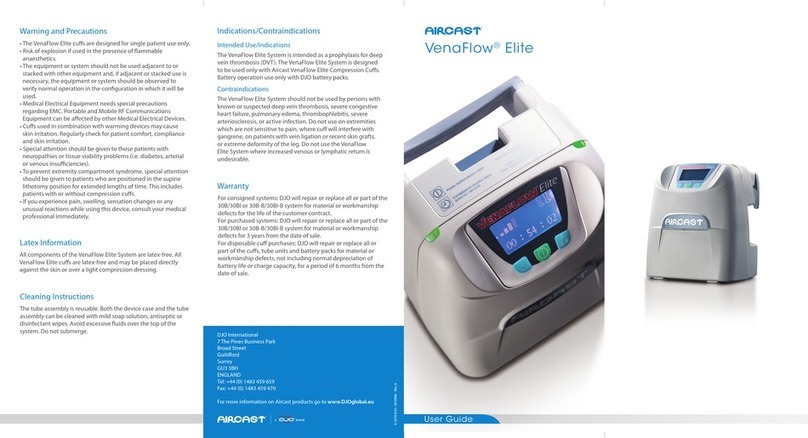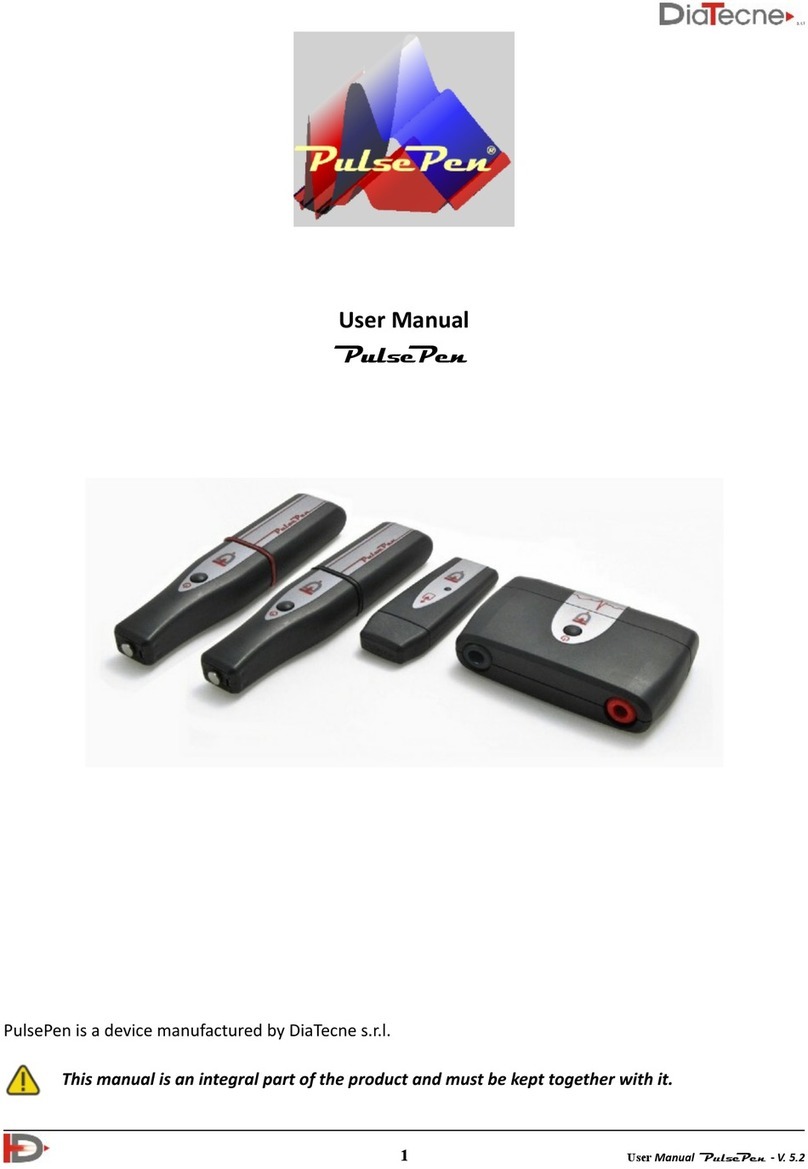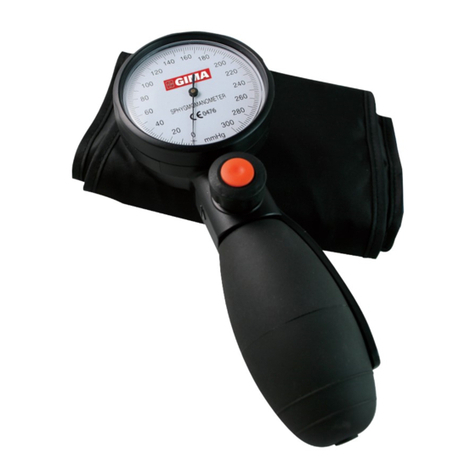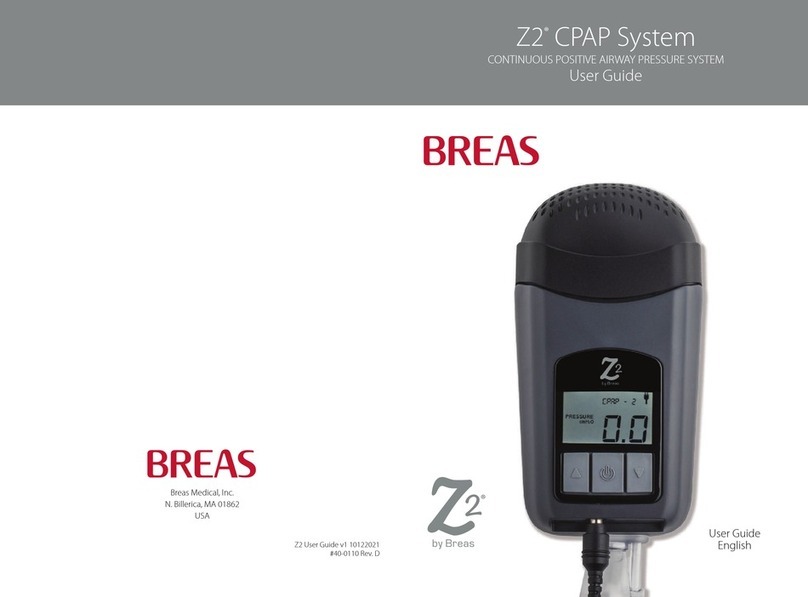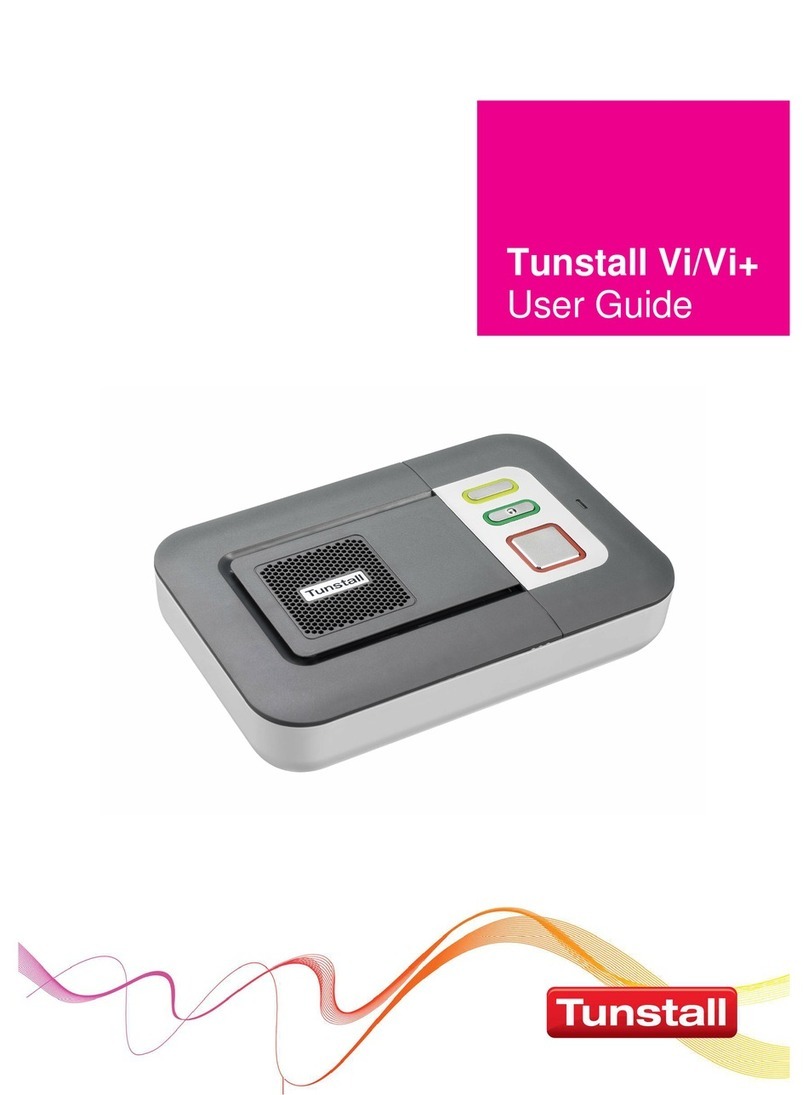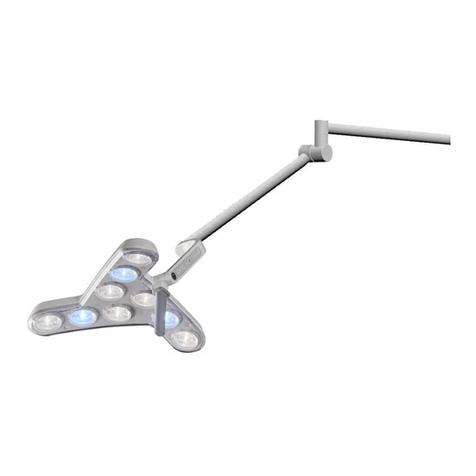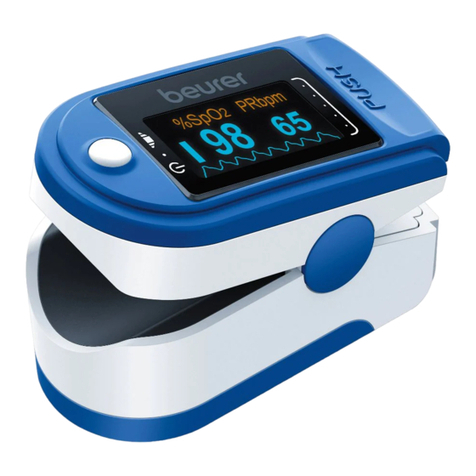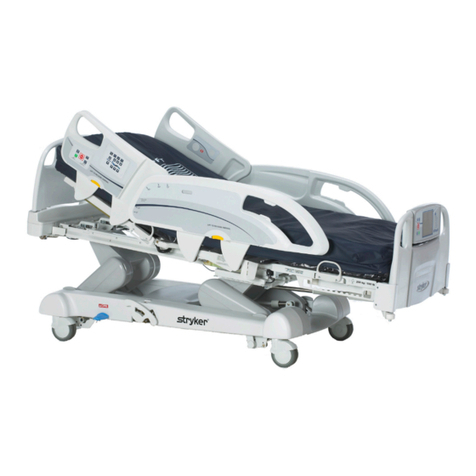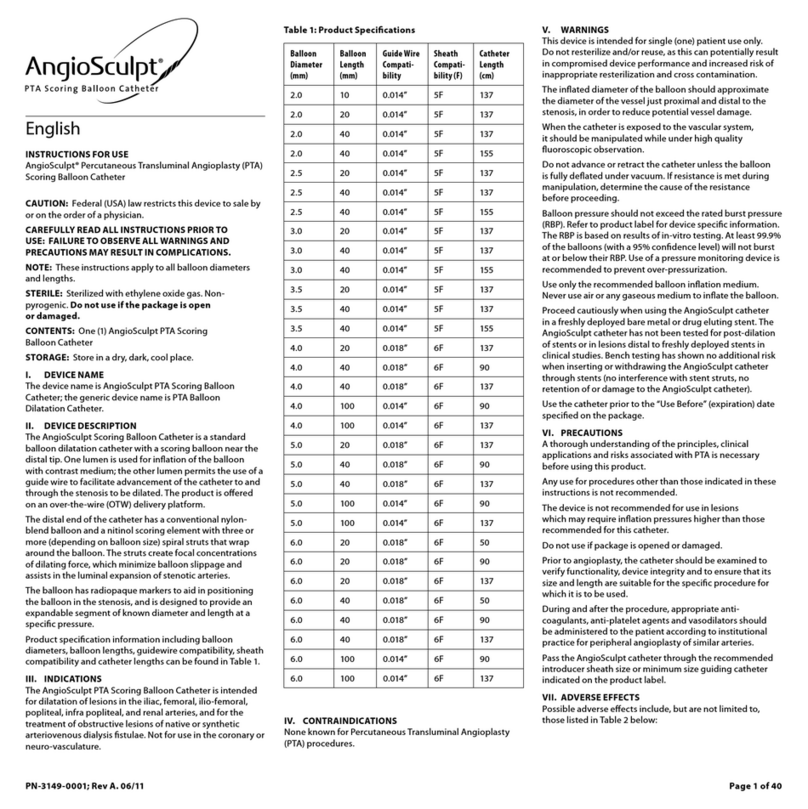Pelsis CURTIS DYNA-FOG HURRICANE ES HESUK User manual

230V electrostatic fogger
USER MANUAL

CURTIS DYNA-FOG warrants to the original purchaser for
two years after the date of purchase that its products
are free from manufacturing defects. Should any defect
appear and be the subject of a written notice from
purchaser, received by CURTIS DYNA-FOG within the
two-year period, CURTIS DYNA-FOG at its option will
repair, replace or send replacement parts for the defective
product at its expense. If repair parts are necessary, these
could be either new or remanufactured, but all shall be of
new quality.
The foregoing is the sole and exclusive remedy for any
breach of warranty by CURTIS DYNA-FOG. This warranty
does not cover cosmetic damage or damage due to
the Acts of God, accident, misuse, abuse, normal wear
or negligence to the product. THE IMPLIED WARRANTIES
OF MERCHANTABILITY AND FITNESS FOR PARTICULAR
PURPOSE ARE EXCLUDED AND CURTIS DYNA-FOG SHALL
HAVE NO LIABILITY FOR ANY CONSEQUENTIAL, INCIDENTAL
OR SPECIAL DAMAGES EVEN IF CURTIS DYNA-FOG WAS
APPRISED OF THE POSSIBILITY THEREOF. In no event shall
CURTIS DYNA-FOG’s liability hereunder exceed the amount
of the purchase price paid for the product. Any warranty
claim must be accompanied by proof of purchase such
as a sales receipt, serial number or receipted invoice to
establish that the product is within the warranty period.
WARRANTY
Limited Warranty
1.0 MAIN COMPONENTS DIAGRAM - HURRICANE ES
CARRYING HANDLE
AIR INTAKE AREA
ON/OFF SWITCH
WITH LIGHT
HIGH CAPACITY
CHARGING SYSTEM
REMOVABLE FILLING
CAP WITH TETHER
ADJUSTABLE
LOCKING DEVICE
STAINLESS STEEL
PRECISION METERING
VALVE WITH FILTER
THREE (3) PRECISION
NOZZLES FOR GREATER
OUTPUT CAPACITY
TRANSLUCENT
CORROSION
AND IMPACT
RESISTANT
HDPE TANK

2.0 SAFETY PRECAUTIONS
(It is the Operator’s responsibility to read and understand the Cautions and Warnings in this manual before attempting to
operate the machine.)
CAUTION
Important: The Hurricane ES has been designed and engineered to be very safe during normal operation. As with all AC
powered equipment, certain safety precautions should be taken. Please read the following WARNINGS before operating the
machine.
.
UNDERSTAND THESE SAFETY PRECAUTIONS BEFORE OPERATING THIS MACHINE. FAILURE TO PROPERLY FOLLOW
THESE PRECAUTIONS MAY LEAD TO A FIRE, EXPLOSION, OR ELECTRICAL SHOCK HAZARD.
MODEL
HESUK 10001
SERIAL
UNITED STATES PATENT: 4,177,949
CANADIAN PATENT: 1,101,381
230V – 50Hz – 4.15A - POWER 930W
DISCONNECT THE POWER SUPPLY BEFORE SERVICING
Pelsis Ltd, HG5 8PJ, UK | Pelsis Belgium NV, Bornem 2880
WARNING
Read and understand
operator’s manual and all
other safety instructions
before using this equipment.
WARNING
Always have the machine serviced by a professional, qualified representative. Never attempt to service
the machine or access its internal components while it is plugged into an electrical outlet.
CAUTION
To avoid electrostatic shock, do not
touch the metal charging ring or
3-prong electrode located at the
nozzle while the machine is operating.
Charging Ring
3-Prong Electrode

This machine contains an electrostatic device that may interfere with sensitive medical devices such as pacemakers and
defibrillators, etc. DO NOT operate this machine or stand within 3 metres if you use any such medical devices. Contact your
physician prior to operation if you are unsure if this machine will interfere with your medical device.
This machine contains an electrostatic device that may cause an electrical shock if not properly grounded. Always use a
three (3) prong grounded extension lead at the ratings shown in the table when using an extension lead.
Hold the appliance when operating so that your hand remains in contact with the grounding strip located underneath the
carrying handle. Leaving the appliance unattended while in operation can cause a build-up of electrostatic charge that can
cause a static shock. Note: Objects in the vicinity of the machine may develop an electrostatic charge during operation.
WARNING
Please read and understand these safety precautions before operating this appliance. Failure to properly follow
these precautions may lead to a serious incident, such as a fire, explosion, or electrical shock hazard.
1. Electric Power.
Precautions:
This machine uses electrical power at common commercially available voltages. When directly contacted, such voltages
are hazardous to human life. All precautions commonly applicable to the use of the electric power are generally applicable
to the use of this appliance. This appliance is designed to operate from three wire power systems where one of the wires is
a safety ground. Use a GFCI (Ground Fault Circuit Interrupter) power outlet whenever possible. Do not disconnect the safety
ground or use extension leads or “cheater” plugs to connect this machine to a two-wire system. This machine must be used
with a 3-prong grounded extension lead plugged into a grounded electrical supply.
Extension Leads:
Extension leads must be properly sized and rated for the voltage, current, and length of an individual lead. Consult the
nameplate current and voltage rating of your machine and the marked rating of the extension lead. A single extension lead
only should be used. When two or more extension leads are placed in a series, the rated current carrying capacities of the
leads may no longer be valid. If an extension lead becomes warm to touch, discontinue its use and obtain a lead with a
higher current rating. Improper extension leads are not only hazardous, but may result in poor machine performance due to
excessive voltage drop.
2. Formulations.
This machine is designed for water formulations only. Do not use flammable formulations with this machine and do not spray
it near sources of admission. Oil based formulations must not be used.
3. Aerosol Concentration.
An acceptable level of liquid in the atmosphere is 2.7 litres per 1,000 cubic metres. There is a safety margin of at least 5 to 1
in this figure.
4. Aerosol Ignition.
If a combustible atmosphere is established or a combustible deposit is laid down, a source of ignition may cause a fire. It is
Carrying Handle
Grounding Strip

strongly recommended that all such sources be eliminated in the appropriate manner. To avoid danger of fire or explosion in
an enclosed space, the enclosed volume fogging time and required formulation volume should be carefully calculated. While
operating the machine, always carry the machine by the carrying handle to ensure that you are properly grounded.
5. Proper and Improper Use.
The following rules apply to the operation of this machine:
DO read the entire manual before operating the machine and pay particular attention to all
CAUTIONS AND WARNINGS
•Only use water-base formulations with this machine
•Store formulation in its original labelled container.
•Only use a 3-prong grounded extension lead which is properly rated for voltage, current, and length and which is
free from nicks, cracks, and other signs of prior abuse. For lengths up to 30.5 metres. Leads with No. 12 AWG wire are
adequate.
•Turn off the appliance before unplugging. Unplug by grasping the plug. Do not pull on the lead to unplug. Do not unplug
machine with wet hands.
•Replace damaged or worn electric lead immediately.
•Turn the flow valve CLOCKWISE to the OFF position after each fogging application while the motor is still operating to
allow clearing of the lines.
•Always comply with any requirements for protective clothing, goggles, facial masks, or respiratory equipment required
by the formulation label.
•Ensure that formulation is applied only in strict compliance with the formulation label.
DO NOT
•Do not use oil-based or flammable formulations with this machine.
•Do not use a machine that is broken or damaged in any way.
•Do not alter the machine by adding or removing parts.
•Do not restrict the motor blower air intake area.
•Do not tamper with the output nozzle or 3-prong electrode and charging ring (collector).
•Do not allow the machine to operate unattended.
•Do not stand in water or hold over water while operating machine.
•Do not allow the power lead or extension lead to be submersed in water.
•Do not use outdoors when it’s raining.
•Do not apply more than 2.7 litres per 1,000 cubic metres in an enclosed space. Exceeding this concentration is both
hazardous and wasteful.
•Do not touch the 3-prong electrode while the machine is operating.

3.0 SPECIFICATIONS
Description
The Hurricane ES™ machine is an electrostatic “Cold Fog” ULV/Mister that utilises a 3-nozzle air-assist design. This device
is intended for applications of Water-Base formulations. The body and tank are made of high-density chemical resistant
polyethylene. The applicator is useful for dispensing most chemicals which are labelled for aerosol or mist applications such
as disinfectants, deodorizers, germicides, insecticides, etc., in locations such as hospitals, schools, nursing homes, greenhouses,
stables, warehouses, homes, and farm buildings. The particle sizes generated range from 10 to 50 microns VMD, obtained
using water. Machine output and particle size are dependent upon the viscosity of the liquid being dispensed. See table 2 for
particle size vs. valve setting (flow rate).
Hurricane™ ES HESUK
Hurricane™ ES HESEU
Motorized Blower:
High efficiency Motor/Blower
Brush Life: Approximately 1000 hours
Electrostatic Power Supply:
230V
Current Draw:
230V
3.40 A
50Hz
Nozzle Type:
Professional grade electrostatic, 3 nozzle,
air assist (vortical type)
Droplet Size:
10-50 Microns VMD (adjustable)
Flow Rate:
0-120 ml/min using water
Droplet throw distance*:
4.5 metres
*Distance is based on indoor use and will vary
depending on droplet size and formulation type.
Smaller droplets (i.e. 20 Microns) can carry much
greater distances than larger droplets.
Tank Capacity:
3.8 litres
Tank Material:
High Density Polyethylene
Weight Empty:
3.4 kg
Shipping Information:
42 cm L X 32 cm W X 47 cm H
Weight:
4.3 kg
Figure 3

4.0 Principles of Operation - Hurricane ES
•This machine consists of a motor/blower assembly, high voltage power supply, charging ring and electrode, blower
housing, a nozzle, formulation tank and metering valve.
•The blower is a two-stage centrifugal compressor driven by a universal motor operating at a speed of 20,000 rpm.
•The blower moves a large amount of air through the nozzle system.
•The nozzle has six (6) stationary fins, which direct the air to create a swirling effect of the air mass as it leaves the nozzle.
•In the centre of this exiting swirling air, a liquid supply spout tube injects formulation.
•The liquid is delivered to the nozzle by a negative pressure at the nozzle caused by the exiting air mass.
•The flow rate is controlled by a one turn precision metering valve located at the formulation tank.
•Generally, the sizes of the output droplets increase with increasing flow rates and with increasing viscosity of the liquid
being dispensed.
•After the nozzles shear the formulation into billions of droplets, the droplets are dispersed into the atmosphere. As the
droplets exit the nozzles they pass through an “electrostatic ion field”.
•This field is created using the combination of a high voltage power supply, an emitting electrode and charging ring (Collector).
The result is billions of electrostatically charged droplets that gravitate to neutral objects to form a uniform coverage.
5.0 Flow Rates, Droplet Sizes and Applications
Liquid flow rate of the Hurricane ES is created by the suction caused by the design of the 3 nozzles. The Flow rate
is regulated by adjusting the metering valve. The liquid flow rate can be increased by rotating the metering valve
anticlockwise and decreased by rotating it clockwise.
There are three flow indicator marks on the side of the tank that designate position 1, position 2 and position 3. All flow rate
information is based on using water with a temperature of 21 C. Increasing the viscosity will decrease flow rate and can
increase droplet size.
Refer to the table below for approximate flow rates and droplet sizes at the various valve settings. Droplet sizes are shown
in microns VMD (Volume Median Diameter). The VMD is an industry standard and represents the “middle point” of the spray
droplet spectrum of the liquid being applied.
Metering Valve Setting
Hurricane ES Flow Rate And Droplet Size
Flow Rate Droplet Size
mL/Min Microns - Volume Median Diameter
#1 60 10 - 20 MICRONS
#2 90 20 - 30 MICRONS
#3 120 30 - 50 MICRONS
IMPORTANT
To maximise electrostatic efficiency, only use Water-Based formulations with the Hurricane ES.
Warning: To prevent damage to sensitive objects or surfaces such as wood finishes, carpeting, and upholstery.
Do not over apply the formulation being sprayed. If in doubt, always perform a spray test on a small area to check
the effects prior to doing the actual spray treatment.
5.1 Insect Control
Depending on the target insect, droplets are generated in the 10-30 Micron range so that even with some evaporation and
settling time, the droplets remain in the correct range for optimal air born suspension and insect impaction. In dry climates
evaporation will tend to cause droplets to “shrink”. Therefore, it may be necessary to increase flow rate to get adequate
coverage. The smaller the droplet size the greater the number of droplets that are created. For example: If 1 millilitre of spray
is dispersed as 20 Micron droplets, there will be 239 million droplets produced. For the same spray mixture using 100 micron
droplets, only 1.91 million will be produced. The large quantity of droplets greatly increases the chances of contact being
made with the insect.

Droplet Size (Microns) Time to fall 10 metres Droplet Density (no/cm3)
1 93.7 hours 19120.0
5 3.7 hours 152.0
10 56 minutes 19.2
20 14 minutes 2.38
50 135 seconds 0.150
100 36 seconds 0.0192
The recommended droplet for Mosquito control is 10-20 Microns. For Fly control approximately 30 Microns. For Bedbugs,
spiders and other crawling insects where a slight residual is desired, 20-40 Microns droplets are effective depending on
insect type and type of formulation being used.
5.2 Odour Control
Depending on the type of environment and odour source, droplets for controlling odours can be in the 20-30 Micron range
and even larger if a “residual affect” can be tolerated.
5.3 Disinfecting
Disinfectants are designed to be applied to non-living objects to destroy microorganisms. Typically, a disinfectant for objects
or surfaces is more affective when applied in the 30-50 micron range. However, smaller size droplets in the 10-20 micron
range can be effective when targeting microorganisms suspended in the air.
Formulation Tube
Metering Valve
Approximate flow rates for the valve
position settings are as follows:
Position Flow rate* Droplet Size (Microns)
1 60 ml/min 10-20
2 90 ml/min 20-30
3 120ml/min 30-50
*Flow rates shown are approximate and will vary depending on liquid viscosity and temperature.
Important: Always spray responsibly. This device is designed to dispense
formulations in a SPRAY (Cold Fog). Always calibrate your machine
to the proper flow rate in accordance with the formulation labels
recommended rate prior to doing any spray application.
POSITION APPLICATION
1 INSECTICIDE
2 DEODORISER
3 DISINFECTANT
CAUTION
READ AND FOLLOW THE INSTRUCTIONS ON THE
FORMULATION MANUFACTURER’S LABEL AND IN THE
OPERATION MANUAL!
THIS DEVICE DISPENSES FORMULATIONS IN ASPRAY (COLD
FOG) OR MIST. MANY FORMULATIONS WHICH MAY BE
DISPENSED WITH THIS DEVICE REQUIRE FEDERAL AND/OR
STATE REGISTRATION. ALWAYS USE THE APPROPRIATE SAFETY
EQUIPMENT AS SPECIFIED ON THE FORMULATION LABEL.

6.0 Maintenance
1. Periodically clean the formulation tank using a hot water/detergent solution. Fully open the machine valve and operate
the machine for 3 to 5 minutes, flushing the solution through the valve, lines and nozzle.
2. Examine the electrical lead for evidence of damage and replace any damaged lead immediately.
3. Clean the Air Intake Filter after every application. If the filter gets saturated (wet and dripping) while the machine is
working, stop the machine and clean the filter.
7.0 Noise Level
The Hurricane ES noise levels do not require hearing protection, however, we would still recommend it, especially when using
it for prolonged periods or in enclosed spaces.

This manual suits for next models
1
Table of contents
